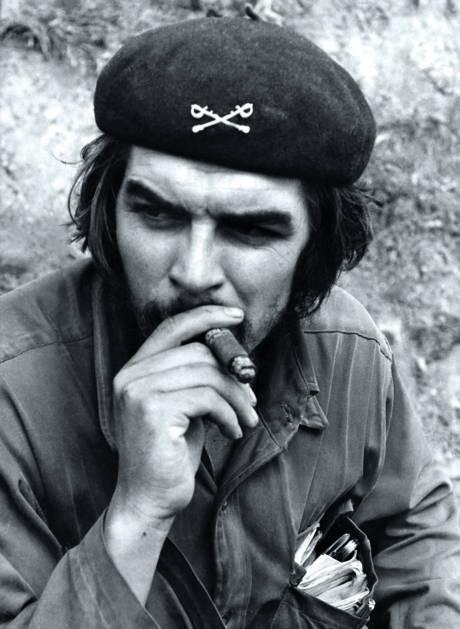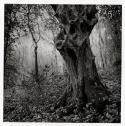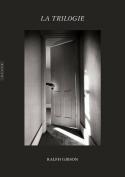Art Of The Day Weekly
#494 - from 7 December 2017 to 13 December 2017

Ernesto Che Guevara in the Sierra Maestra, 1958 © Centro de Estudios Che Guevara.
IN THE AIR
When Che Guevara makes us think about the power of the image
MILANO – We live in a time of uncertainty, and to echo that feeling on-line media tend to diffuse throughout the planet, alike a track of gunpowder, the least event. Simultaneously, the real impact of facts is phased out by our demand to have everything immediately. What seems to most matter is the last piece of news, the one that chased away the previous one. The last email we receive is better than the one before that. The retinal persistence no longer functions. We have just gasped at the photos of the assassination of former Yemenite president Saleh or by the headache of the next Irish border, when all of a sudden French first lady Brigitte Macron appears with a small baby panda in her arms at the zoo of Beauval. And just as quickly, the death of Johnny Hallyday erases everything else. In this context, in which we all zap constantly, an exhibition that studies, questions and observes a given period has a true didactic virtue. As an example, the retrospective dedicated to Ernesto Guevara that has just opened at the Fabbrica del Vapore in Milano questions the power of image. In our day, the pipes of Instagram and Facebook are continuously gorging with perishable clichés (among them the selfie, to quote Mallarmé, a “trinket of inanity”). So, the capacity of building a universal myth – that of the Che! – with just a few black and white photographs, is something of a miracle. No star of VIP today would accept such a media famine. We are bulimic in front of our various screens, and gobble down daily images by dumpers. Just like anthracite, which burns without leaving any ashes or smoke, they evaporate without leaving any traces. When will it be mandatory to follow a course to muscle up our look? As Claudel said so beautifully – and which is the name of a historical bookstore in Montparnasse that was just saved from closing through fund collecting – the eye listens. It deserves a solfeggio rather than a constant and stressing “noise”. Close your eyes for ten minutes and try to remember the last painting you saw…
• Che Guevara at the Fabbrica del Vapore, from 6 December 2017 to 1st April 2018.
EXHIBITIONS

Beate and Serge Klarsfeld disturb the funerals of Xavier Vallat, former "commissaire général aux questions juives" and exponent of the anti-Semitic far right, in Pailharès. 8 January 1972 Photo Elie Kagan, Coll. Klarsfeld
The Klarsfelds: never forget
PARIS – We regularly worry about it, and even more so recently when newspapers like The Guardian in Great Britain and La Repubblica in Italy publish articles on the reappearance of neo-Nazism. It feeds on the rise of identity and nationalistic movements, and on the doubts on the use of a European construction. The triviality of evil is not something recent and if we look at it in perspective we realize that it was no easier to fight it right after the Second World War. At the time, the former Nazi dignitaries held positions with responsibilities and it took a lot of audacity in 1968 to slap West German Chancellor Kiesinger, who had been one of the artisans of the Reich’s propaganda on the radio! That is what Beate Klarsfeld did at the Convention of the Christian Democratic party. The exhibition shows the part she played for half a century with her husband Serge, to continue hunting down the persons responsible in the regime, from Germany to Paraguay, and all the obstacles they met – trials, imprisonment, and smear campaigns – and overcame. Many others would have preferred to bury past mistakes in the euphoria of the post-war boom. But the amnesia of history is fodder to new racism.
• Beate et Serge Klarsfeld, les combats de la mémoire at the Mémorial de la Shoah, from 7 December 2017 to 29 April 2018.
The mechanism of Terror
PARIS – From March 1793 - creation of the revolutionary Tribunal – to July 1794 – the fall of Robespierre during the Thermidor days -, France experienced a unique period, la Terreur (Terror). During this endless year, power was concentrated in circles that were regularly reduced, as two thirds of the deputies of the Convention no longer sat in, wheter haunted, dead or in hiding, and the guillotine worked 24/7, both in Paris and in the provinces. Was this the first manifestation of modern, totalitarian regimes? The complex character of this period is often reduced in our collective imagination to the confrontation of a few unusual characters, with Robespierre and Danton in the forefront. The exhibition uses the rich collections of the Musée Carnavalet that is currently closed for renovation, and asks the eternal question – even today-: how do we use fear as a governing tool?
• Gouverner avec la peur : la Terreur at the galerie Soufflot, from 4 December 2017 to 13 January 2018.
10 ways of looking at Capodimonte
NAPLES – Museums are a palimpsest, an accumulation of objects, and we rarely question the value and importance, especially in Europe where collections cannot be deaccessioned. By letting time be the supreme judge, it did save certain ensembles that would have been scattered, but it prevents us sometimes from having an iconoclastic – though necessary – opinion. The museum of Capodimonte, one of the universal museums of the Old Continent, has found an intermediary solution (already experimented elsewhere, with writer Philippe Djian for example at the Louvre). He chose to partially shake-up its collections by asking ten guest curators to dip into it to make up their own micro-museums. Through the ten rooms prepared by historian Marc Fumaroli, artist Giulio Paolini, businessman Gianfranco D’Amato, orchestra director Riccardo Muti, and six other actors, their choices unveil certain details, shed light on others, are points of view that question the established order.
• Carta bianca at the Museo di Capodimonte, from 11 December 2017 to 17 June 2018.
ARTIST OF THE WEEK
Jean-Luc Chapin: the call of the wild
Over the last ten years, the list of photographers who shifted from silver photography to digital is endless. This particular one, Jean-Luc Chapin, did the contrary: after trying to adapt to the fashion, he stepped back since he didn’t find in the digital technology the depth perception, nor the texture of the old methods. These landscapes with marked blacks – at times velvety, at times thick like a line of khôl- enclose claimed craftsmanship and long waiting periods. The white suffers, hidden sometimes in the eye of an owl. It is actually grey which dominates, with a great number of shades, rainy, pearly, in the horizons, wet leaves, bulrush, trunks… A lover of Nature, of rivers, of mushrooms, and of dogs, which he approached in other works, Chapin produces a portrait here of France that we could qualify as savage, and yet so accessible, from the Gironde to the Dordogne, al the way to the Poitevin marshlands. There isn’t a human being in sight, nor a trace of plastic. But maybe this is only a reprieve.
• Natures, photographs by Jean-Luc Chapin, exhibition at the galerie Gallimard, until 13 January 2018. Catalogue Gallimard, texts by Jean-Marie Laclavetine and Muriel Barbery, 168 p., €39.
OPENINGS OF THE WEEK

ORIENT EXPRESS
7 December 2017 - PARIS - Galerie Hervé Courtaigne
Following the mythical train, tribute to the artists of the "Ecole de Paris" coming from Eastern Europe (ill. N. Dumitresco)
BOOKS
The Gibson mystery
He has the name of a guitar and of the actor from Mad Max. But this Gibson, surnamed Ralph, became famous through another artistic discipline, photography. At the beginning of the 1970s, when he was 30 years old, while his destiny was still uncertain (even though he was the assistant of Dorothea Lange), he decided to control his creative process from beginning to end. In a very short time he produced three works of art, of which he ensured the image (photos, of course), the text (very terse), as well as the layout. These books with enigmatic titles (The Somnambulist, Déjà-Vu, Days at Sea) unveil a very personal universe without giving any explanations, allowing the reader to develop his own interpretation. When looking at this man blowing his nose in the space of a tree trunk, at this woman caressing her buttocks with a feather, or this hand opening a door, we have to knit analogies with Surrealism and its incompatible reconciliation. This new publication accompanies an exhibition at the Pavillon populaire in Montpellier (until 8 January 2018), and once again invites the reader to make his “own movie”.
• Ralph Gibson, Trilogie, directed by Gilles Mora, éditions Hazan, 2017, 200 p., €35.
IN BRIEF
MIAMI – The Art Basel Miami Beach art fair is being held from 7 to 10 December 2017.
PARIS – The Salon des Beaux-arts is being held from 7 to 10 December 2017 at the Carrousel du Louvre.
PARIS - The Galeristes art fair is being held at the Carreau du Temple on 9 and 10 December 2017.


